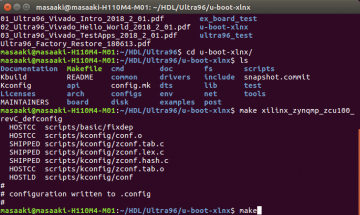

Booting from SD-Card Creation of a bootable SD-card The MfgTool uses an XML file ( ucl2.xml) for configuration.įor any further information about the tool and how it can be used, please also see the manual.
Please read the documentation of the tool for further information about installing and additional options. Then you need to start the tool (needs root privileges on most systems): sudo. home/user/yocto-exceet/build-exceet-morty/tmp/deploy/images/u-boot.imx:clear_dcd,load,jump header home/user/yocto-exceet/build-exceet-morty/tmp/deploy/images/image-exceet-initramfs-production-m圆.u-boot:load 0x83C00000 home/user/yocto-exceet/build-exceet-morty/tmp/deploy/images/zImage-im圆ul-testadapter.dtb:load 0x83000000 home/user/yocto-exceet/build-exceet-morty/tmp/deploy/images/zImage:load 0x82000000 home/user/yocto-exceet/build-exceet-morty/tmp/deploy/images/u-boot.imx:dcd #hid/bulk,max packet size, dcd_addr, (repeat valid ram areas)
U boot yocto full#
To load a full system (Bootloader, Kernel, FDT, initramfs) to the RAM and start it, you can edit the configuration file m圆_usb_nf.
U boot yocto Pc#
To download and run content from your host PC on the device you can either use the official NXP/Freescale-Tool called MfgTool (latest version runs on Windows and Linux), or if you use Linux, you can use the simple commandline tool imx_usb_loader from Boundary Devices. On Linux you can check for the device with lsusb: lsusb | grep Freescaleīus 003 Device 003: ID 15a2:007d Freescale Semiconductor, Inc.
U boot yocto serial#
When the SOC is in serial loader mode and you connect a Micro-USB cable to the OTG-Port of the board, your host PC should detect a new USB device. It is also possible, that the serial loader mode will not be activated until the boot from all other removable (SD-card) and non-removable (eMMC, NOR-Flash) fail. To use this feature the SOC has to be in serial loader mode, which means you should remove any other boot device such as an SD-card before powering the board.ĭepending on the OTP-Fuses and if they were already burned, it might not be possible to put the SOC into serial loader mode anymore. This is mostly used in development or production environment. The i.MX6 SOCs have the ability to load images and data from a host PC via USB to the internal SRAM and external DRAM. Then you can use fw_printenv and fw_setenv the same way as you would use printenv and setenv in U-Boot. Please note, that you can also modify the bootloader variables from within a running linux if the package u-boot-fw-utils is installed. To enter the bootloader commandline and change the bootloader settings, hit a key before the bootloader starts booting. SF: Detected EN25Q80 with page size 256 Bytes, erase size 4 KiB, total 1 MiBĪfter waiting for three seconds, the bootloader tries to boot the linux kernel and mount the root filesystem. The boot messages of the bootloader on the debug terminal will look something like this: U-Boot 2014.04 (15:17:53)ĬPU: Freescale i.MX6SOLO rev1.1 at 792 MHzĬPU: Temperature 25 C, calibration data: 0x59e50869

from a Yocto *.sdcard-image) the bootloader from the SD-card will be starting. If an SD-card containing a bootloader is available (e.g. Upon supplying power to the hardware, the U-Boot bootloader stored in the NOR-Flash will be starting. This is the kernel image containing the linux kernel. This file is an UBI image, that can be written to an onboard flash chip. This file contains the compressed rootfs and can be used to load the filesystem via network after it was extracted. In case that the production-override is set in your nf, your SD-card might also contain a UBI-image to flash the system to the onboard memory and a bootloader image (u-boot.imx) to flash the bootloader. The second partition (EXT) contains the root file system (rootfs). It contains a boot partition (FAT) with the Linux kernel (uImage or zImage) and one or multiple device tree files (*.dtb). This file can be used to create a bootable SD-card. Older image files will be kept in this directory until they are deleted. The image files of the latest build can easily be accessed by using the links, that always point to the files most recently created. The variable IMAGE_FSTYPES can be used to set the types of images to be created. You can find the image files in your build directory in tmp/deploy/images. Booting the image on your hardware Image typesĭepending on the configuration, Yocto creates different types of images.


 0 kommentar(er)
0 kommentar(er)
